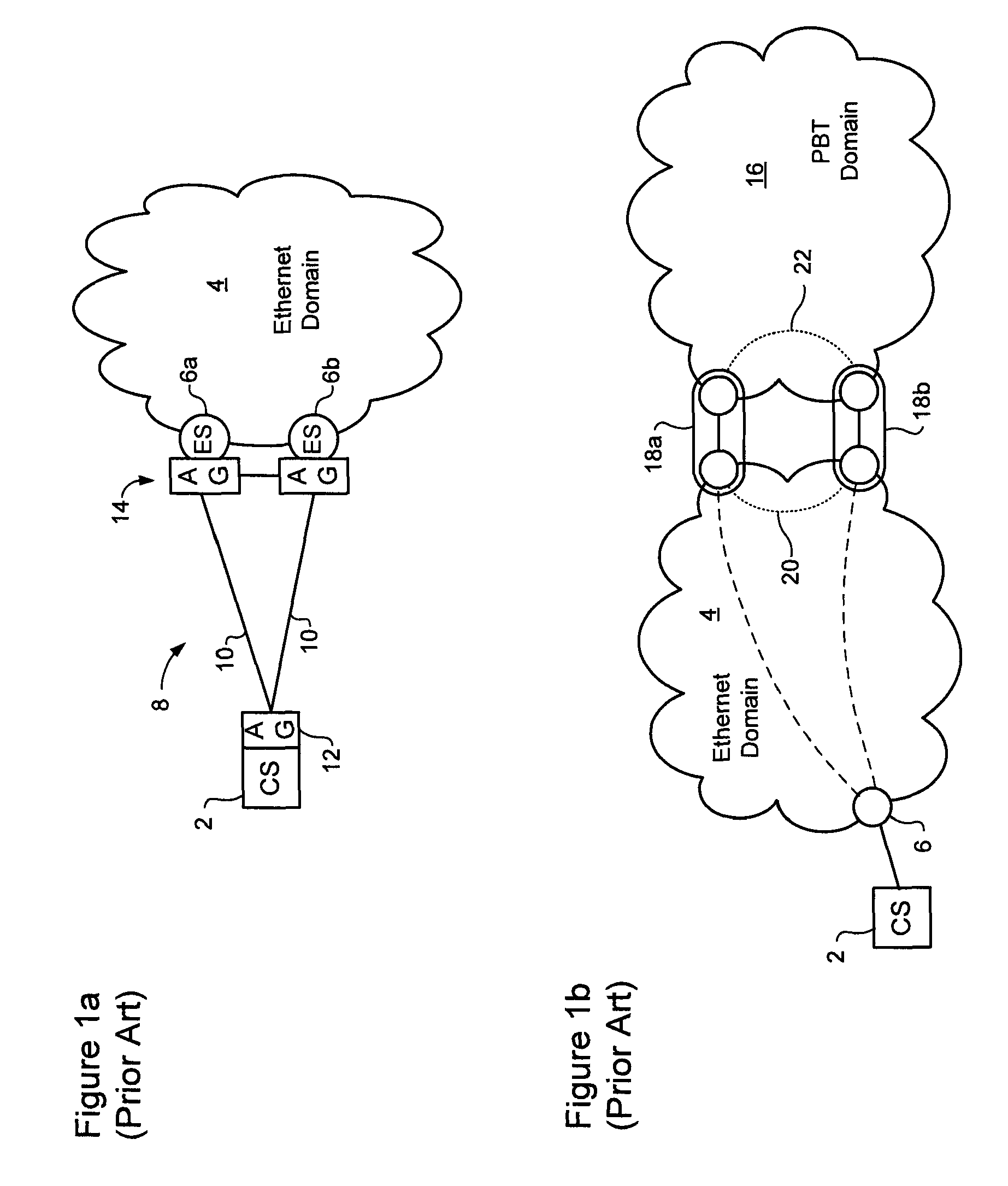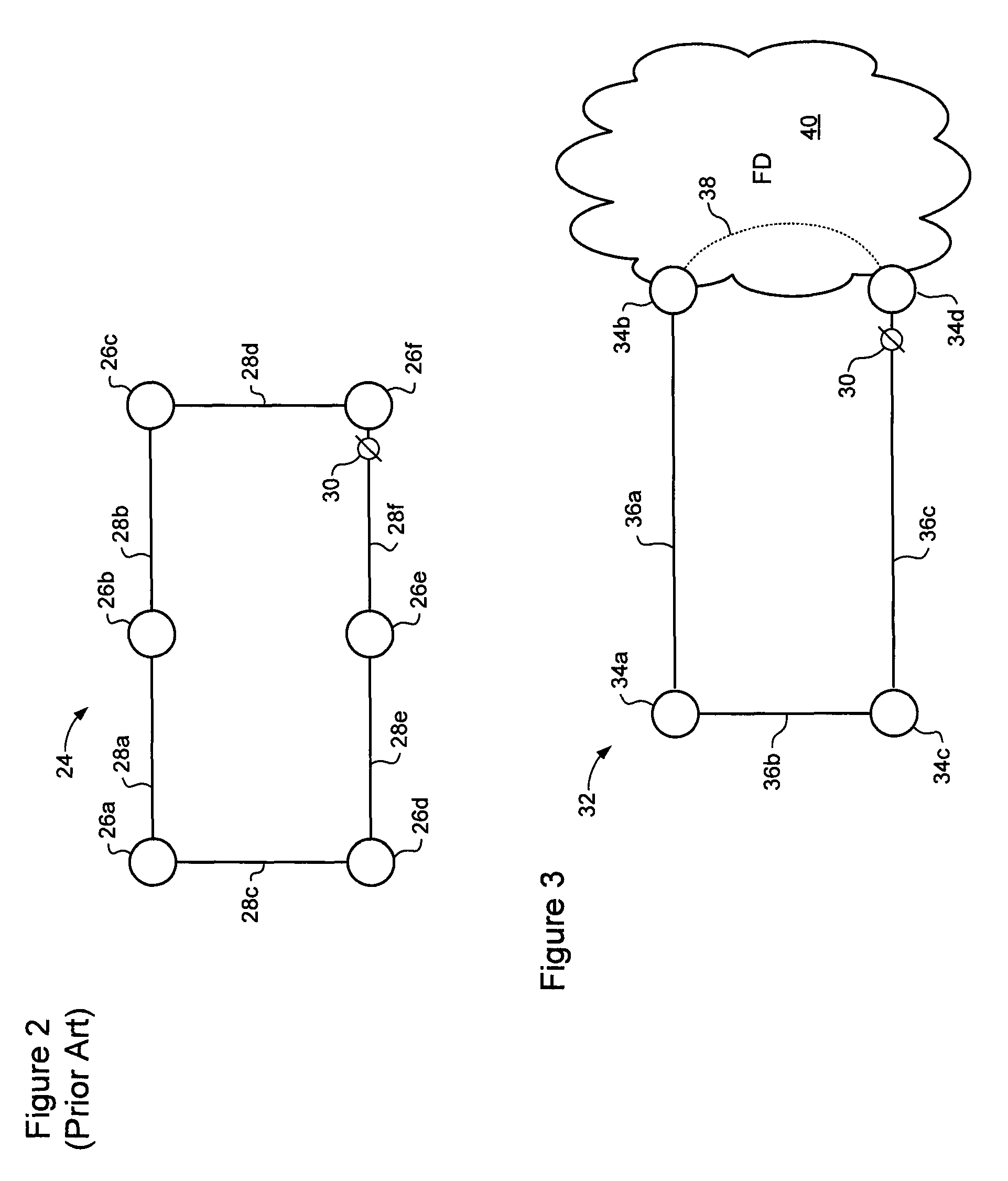Dual homed E-spring protection for network domain interworking
a network domain and protection technology, applied in data switching networks, frequency-division multiplexes, instruments, etc., can solve problems such as destabilization of networks, and achieve the effects of ensuring loop freeness, simple and robust protection switching functionality, and high speed failure recovery
- Summary
- Abstract
- Description
- Claims
- Application Information
AI Technical Summary
Benefits of technology
Problems solved by technology
Method used
Image
Examples
Embodiment Construction
[0017]The present invention provides a method of supporting dual homed interworking between an Ethernet network domain and a foreign network domain. Embodiments of the invention are described below, by way of example only, with reference to FIGS. 2-6.
[0018]ITU-T SG15 / Q9 recommendation G.8032 (June, 2008) describes protection switching in an Ethernet ring. Referring to FIG. 2, an Ethernet ring 24 is an Ethernet network comprising nodes 26 and links 28 connected together in a ring topology. One of the links of the ring is designated as a Ring Protection Link (RPL), and is disabled during normal operation of the ring by placing a channel block 30 on that link. Typically, a channel block 30 is imposed at a node at one end of the RPL, which node may then be referred to as the RPL Owner. In some cases, the channel block 30 may, for example, comprise a policy that prevents packets of the ring from being forwarded through a port hosting the RPL. With such a channel block 30 in place, the ri...
PUM
 Login to View More
Login to View More Abstract
Description
Claims
Application Information
 Login to View More
Login to View More - R&D
- Intellectual Property
- Life Sciences
- Materials
- Tech Scout
- Unparalleled Data Quality
- Higher Quality Content
- 60% Fewer Hallucinations
Browse by: Latest US Patents, China's latest patents, Technical Efficacy Thesaurus, Application Domain, Technology Topic, Popular Technical Reports.
© 2025 PatSnap. All rights reserved.Legal|Privacy policy|Modern Slavery Act Transparency Statement|Sitemap|About US| Contact US: help@patsnap.com



